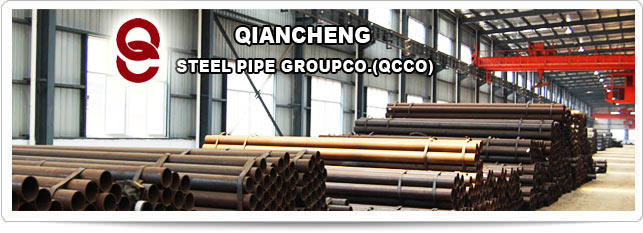Flange standard and selection method
Home >
-
API steel pipe
- API steel pipe
- API steel casing pipe
- Casing and Tubing
- API drill pipe
- API5L steel pipe
- Oil pipeline

-
Carbon steel pipe
- Carbon steel pipe
- Welded steel Pipe
- seamless carbon steel pipe
- Petroleum Casing Pipe

-
Alloy steel pipe
- astm a 335 gr p22
- alloy steel pipe l555
- 25crmo4 alloy steel pipe
- alloy pipe a335 p11








- interpret seamless steel pipe
- Water pipeline - Handling and
- Applications of welded pipe pil
- welded steel pipes and Seamless
- ASTM A 106 Seamless Pipe
- Carbon dioxide resistant oil ca
- seamless steel pipe On-line col
- EN 10305-1 / DIN 2391 cold draw
- EN 10255 Standard Pipe,replaces
- API 5L A53 / A106 Grade B, Seam

One of the Top 500 enterprises in China foreign trade
QCCO was approved as a member of “China Association for Contracting Projects Abroad “and granted a membership certificate on Sep 28,2005; “Credibility Rating AAA certificate in Foreign Trade” was granted to QCCO by China Shippers’ Association

Flange standard and selection method
There are two types of flange standards used in petroleum and chemical industry. One is the pressure vessel flange standard, and the other is the pipe flange standard.
Flat welding and butt welding flanges have two types of rings with and without rings. When the equipment is made of stainless steel, carbon steel flange 7 and stainless steel lining rings are used to save the stainless steel.
When using the flange standard to determine the flange size, you must know the nominal diameter and nominal pressure of the flange. The nominal diameter of the pressure vessel flange and the nominal diameter of the pressure vessel take the same series of values. For example, DN 1000mm pressure vessels should be equipped with DN 1000mm pressure vessel flanges.
The nominal pressure of the flange is determined in relation to the flange's maximum operating pressure, operating temperature, and flange material. Since the flange size series and the flange thickness were calculated, the 16MnR mechanical performance at 200°C was used as a benchmark. It is therefore specified that the flange size determined by this reference, at 200°C, its maximum allowable operating pressure is considered to be the nominal pressure of the flange of that size. For example, a flange with a nominal pressure PNO.6 MPa refers to a flange having a specific size that is made of 16 MnR. Its maximum allowable operating pressure is 0.6 MPa at 200°C. If the PN 0.6MPa flange is used above 200°C, its maximum operating pressure will be lower than its nominal pressure of 0.6MPa.
Conversely, if it is used under 200°C, the maximum working pressure is still determined at 200°C. If the material of the flange is changed to Q235-A, the mechanical properties of Q235-A steel are worse than that of 16MnR. This flange with a nominal pressure of PN 0.6MPa, even if it operates at 200°C, its maximum allowable operating pressure will also be Below its nominal pressure. Conversely, if the material of the flange is changed from 16MnR to 15MnVR, then, since the mechanical performance of 15MnVR is better than that of 16MnR, the flange of this nominal pressure PN 0.6MPa, when operated at 200°C, its maximum allowable operating pressure will be higher than Its nominal pressure. In short, as long as the nominal diameter and nominal pressure of the flange are determined, the size of the flange will be determined. As far as the maximum operating pressure allowed for this flange is concerned, it is necessary to look at the operating temperature of the blue and the materials used to make it.
上一篇:Construction Technology of steel pipe for communication tower


